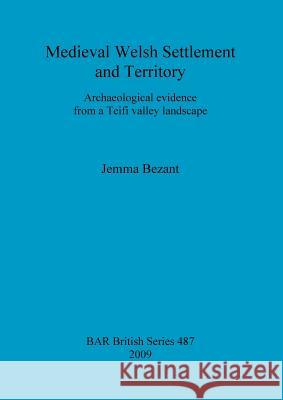Medieval Welsh Settlement and Territory: Archaeological evidence from a Teifi valley landscape » książka
Medieval Welsh Settlement and Territory: Archaeological evidence from a Teifi valley landscape
ISBN-13: 9781407304427 / Angielski / Miękka / 2009 / 132 str.
Medieval Welsh Settlement and Territory: Archaeological evidence from a Teifi valley landscape
ISBN-13: 9781407304427 / Angielski / Miękka / 2009 / 132 str.
(netto: 194,80 VAT: 5%)
Najniższa cena z 30 dni: 203,28
ok. 30 dni roboczych
Dostawa w 2026 r.
Darmowa dostawa!
Principally through the use of landscape archaeology, this work explores the medieval landscape of west Wales, particularly the 'cwmwd' of Gwinionydd in the central Teifi valley, Ceredigion. The main focus of the study is to recreate the 'cwmwd-maenor-tref', territorial system administered by a pre-conquest Welsh aristocracy and locate native tenures along with their specific agricultural regimes. A retroactive analysis of estate structures, such as those at Llanfair and Llanllyr, establishes their medieval antecedence and they are considered alongside the monastic granges of Whitland, Strata Florida and Talley abbeys. This project draws upon techniques including field survey, remote sensing, geophysics, mapping and terrain modelling using Geographic Information Systems and Lidar data. These are complemented by excavation to target and clarify the interpretation of the survey results. The work can be viewed as a trans-disciplinary landscape analysis that has implications for future approaches to the study of rural Wales: this successful study of an apparently inscrutable rural landscape is relevant for research and curatorial disciplines alike.
Principally through the use of landscape archaeology, this work explores the medieval landscape of west Wales, particularly the 'cwmwd' of Gwinionydd in the central Teifi valley, Ceredigion. The main focus of the study is to recreate the 'cwmwd-maenor-tref', territorial system administered by a pre-conquest Welsh aristocracy and locate native tenures along with their specific agricultural regimes. A retroactive analysis of estate structures, such as those at Llanfair and Llanllyr, establishes their medieval antecedence and they are considered alongside the monastic granges of Whitland, Strata Florida and Talley abbeys. This project draws upon techniques including field survey, remote sensing, geophysics, mapping and terrain modelling using Geographic Information Systems and Lidar data. These are complemented by excavation to target and clarify the interpretation of the survey results. The work can be viewed as a trans-disciplinary landscape analysis that has implications for future approaches to the study of rural Wales: this successful study of an apparently inscrutable rural landscape is relevant for research and curatorial disciplines alike.











